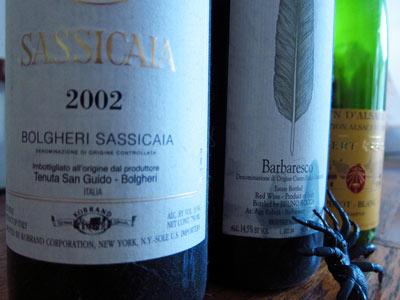In Alexander Payne’s 2006 movie Paris Je T’aime (“Paris, I Love You”), actress Margo Martindale plays Carol in one of the 18 shorts entitled, 14e Arrondissement (this is the entire clip that’s just under seven minutes). The Wikipedia page for this short describes it so concisely, it must be fully quoted: “a letter carrier from Denver, Colorado on her first European holiday, [reciting] in rough French what she loves about Paris.”
Rough French. While the clip makes you laugh and even weep a little (It’s that good), it well illustrates the perils of not just the French language for a non-native speaker but the perils of any foreign language, even if that foreign language happens to be in your own native language. Said in another way, the language of wine can be just as scary as ancient Sanskrit.
No one wants to sound like Carol. Here’s a primer on navigating the fear.
Most French and Italian Wine Labels Don’t Name The Grape
And they’re in French! Or Italian! Yikes! This is tricky. After all, when we think of wine, we think of France or Italy. And then we immediately regret such thinking after taking a look at one of their labels.
Both Italian and French labels reflect the importance of the place versus the grape. The proper way – and this is in French but so well-known, there’s really no other way of referring to this – is terroir (t-air-WAH-rrrrrrr). Consequently, wines from the Burgundy region of France, for example, will not only have Burgundy (or Bourgogne) on the label in huge, bold typeface, they will not have the name of the grape.

Most of the time, the grapes are either Pinot Noir or Chardonnay. Of course, there are many delicious exceptions. How will you know this? Well, a Ouija Board might look like an option, but it’s probably safer to ask for help. And wine purveyor will be able to talk your ear off in these matters. Online searches are key if you are the more solitary, research type.
Things get even more difficult with Bordeaux wines because of something referred to as the Bordeaux Wine Official Classification of 1855. It’s Emperor Napolean III’s fault. And just like the NCAA with all its power and treachery, it will take nothing short of a miracle to change things for the better. Until that happens, it’s good to know a guy who knows a guy when purchasing Bordeaux wines. Or Google.
Scary Grapes
JT, a great man and wine buyer I once worked with, had an ingenious philosophy about obscure grapes (a.k.a. varietals): “If you see someone growing an obscure grape in an area not known for those grapes, you know the wine will be good.” This is so true. If someone is growing Petit Verdot in Napa, you know they’re growing a grape that’s not well-known but also difficult to pronounce. Why would someone do that? Most likely, it’s because they are passionate about it. It’s worth the risk, they think. In the very complicated realm of wines, this is a great rule of thumb: Scary grapes in familiar areas.
Wine buying can be scary. Fortunately, there’s hope. And for this Halloween, hopefully that means a better and even scarier wine than ever before. Cheers!